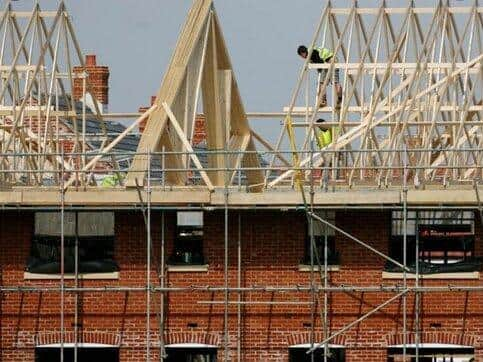This is how many new homes are set to be built in Preston, Chorley and South Ribble every year
and live on Freeview channel 276
Preston City Council has become the third and final local authority – along with its neighbours in Chorley and South Ribble – to approve the way in which a housing target for the region should be split between the three areas.
A government-set method of calculating housing need calculated that an annual total of 1,026 new properties are required across Central Lancashire.
Advertisement
Hide AdAdvertisement
Hide AdThe three-way agreement between the local authorities takes this figure and distributes it between the councils on the basis of what they consider is their local need.


The so-called “memorandum of understanding” means Preston will have to build at least 410 dwellings a year, South Ribble 334 and Chorley 282.
If the calculation had been applied to each council area without any redistribution, it would have resulted in Chorley being responsible for delivering almost three-fifths of the annual total, with Preston and South Ribble less than a quarter each. However, the authorities agreed to the revised share on the basis of housing delivery commitments made under the City Deal involving the two latter council areas.
The arrangement replaces a previous redistribution of a higher total arrived at under an earlier method of calculation, which had required Preston to deliver 510 dwellings. A planning inspector ruled in 2018 that the city council was unable to meet that figure on a rolling five-year basis – leaving the authority forced to approve a series of controversial applications to the north of the city on land which was not earmarked for housing.
Advertisement
Hide AdAdvertisement
Hide AdHowever, a separate appeal case in South Ribble late last year concluded that the now approved method of calculating and redistributing housing figures in Central Lancashire was the one which should be applied – and, crucially, that Preston would be able to demonstrate the required five-year supply of land for housing on the basis of it.
That case is now subject to a legal challenge from developer Wainhomes – one which the government has said it will not defend on behalf of its own planning inspector. But in the meantime, it is understood that all three authorities are using it to inform their planning decisions.
The revised MOU is intended to be in place until Central Lancashire’s councils agree a new local plan for the region, which will dictate land use in the area up until the mid-2030s. However, that document is more than three years away from completion.
Developers and planning agents were consulted over the new MOU, along with individual parish, district and county councillors. The majority of respondents were opposed to the agreement.
Advertisement
Hide AdAdvertisement
Hide AdA report publishing the responses does not name the individuals or companies which replied, but many of the issues raised seem to relate to developer concerns.
Respondents claimed that housing figures should be determined only via the local plan process – which is subject to a public assessment by a planning inspector – and that the MOU would “circumvent the statutory regime and has been repeatedly held to be unlawful”.
It was also suggested that the councils had not demonstrated the exceptional circumstances required to deviate from the individual totals for each council area, nor the evidence to justify the redistributed allocation for Chorley.
However, council officers concluded that the authorities were complying with their “duty to co-operate” under an arrangement recognised by the government. They also said that exceptional circumstances needed to be demonstrated only where the outcome of any changed approach resulted in lower housing targets than under the government’s standard methodology – and noted that the overall total for Central Lancashire remains the same.
Advertisement
Hide AdAdvertisement
Hide AdPreston City Council leader Matthew Brown, speaking behalf of all three Central Lancashire authorities, said: “The MOU, in advance of the conclusion to the review of the Local Plan, ensures that the aggregate local housing need across Central Lancashire is met and that a consistent approach to monitoring housing land supply in Central Lancashire is established.”
Preston’s decision to approve the MOU was taken by Cllr Brown alone under emergency powers to deal with the absence of formal meetings during the coronavirus crisis. It would usually have been made by the whole cabinet.